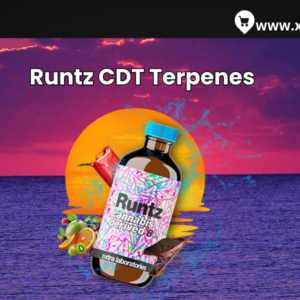Haemophilia is a rare genetic disorder where blood doesn’t clot properly due to the lack of sufficient blood-clotting proteins, known as clotting factors. There are three main types: Hemophilia A, which involves a deficiency in clotting factor VIII; Hemophilia B, a deficiency in clotting factor IX; and Hemophilia C, which is rarer and involves a deficiency in clotting factor XI. This condition primarily affects males, as it is inherited in an X-linked recessive pattern. Symptoms include prolonged bleeding, spontaneous bleeding, and internal bleeding, particularly in joints and muscles, which can lead to significant pain and long-term damage.
Market Overview
As of 2023, the haemophilia treatment market size was valued at approximately USD 14.84 billion. This market is expected to experience robust growth, driven by advancements in treatment technologies, increasing prevalence of the disease, and rising awareness among patients and healthcare providers. Projections indicate a compound annual growth rate (CAGR) of 7.5% from 2024 to 2032, with the market expected to reach USD 28.44 billion by 2032.
Haemophilia Treatment Market Trends
Increasing Prevalence of Haemophilia
The global prevalence of haemophilia is on the rise, partly due to better diagnostic techniques and increased awareness. According to the World Federation of Hemophilia, it is estimated that about 400,000 people worldwide suffer from haemophilia. The growing number of diagnosed cases directly impacts the demand for haemophilia treatments, driving market growth. This increase in prevalence necessitates ongoing advancements in treatment to manage the growing patient population effectively.
Rapid Advancements in Treatment
Technological advancements have significantly transformed haemophilia treatment. Innovations such as gene therapy offer the potential for long-term solutions by addressing the underlying genetic causes of the disorder. For example, gene therapies that deliver functional copies of the faulty genes can potentially provide lasting benefits and reduce the need for frequent treatments. Additionally, recombinant DNA technology has led to the development of new clotting factor concentrates, which are more effective and carry a lower risk of transmitting infections compared to plasma-derived factors.
Rising Awareness and Diagnosis Rates
Awareness campaigns by healthcare organizations and patient advocacy groups have significantly increased the rate of haemophilia diagnosis. Early diagnosis is crucial for effective management and treatment of haemophilia. Public health initiatives and educational programs aim to inform both the general public and healthcare professionals about the symptoms and treatment options for haemophilia, thereby improving diagnosis rates and patient outcomes.
Government Initiatives and Funding
Government support plays a vital role in advancing haemophilia treatment. Various countries have implemented programs to provide financial assistance for haemophilia patients and fund research into new treatments. Grants and funding from governmental bodies and non-profit organizations facilitate ongoing research and development efforts, leading to innovative treatment options. Policies aimed at improving access to healthcare also contribute to market growth by ensuring that more patients receive the necessary treatments.
Haemophilia Treatment Market Segmentation
By Type
- Hemophilia A: This type, caused by a deficiency in clotting factor VIII, is the most common form of haemophilia. It accounts for approximately 80-85% of all cases.
- Hemophilia B: Also known as Christmas disease, this type results from a deficiency in clotting factor IX and constitutes about 15-20% of haemophilia cases.
- Hemophilia C: This rare form is caused by a deficiency in clotting factor XI and affects both genders equally.
By Treatment
- On-demand Treatment: This approach involves administering clotting factors during bleeding episodes to manage symptoms and prevent complications.
- Prophylactic Treatment: Regular infusions of clotting factors to prevent bleeding episodes and maintain normal clotting function.
- Replacement Therapy: Administering clotting factor concentrates derived from human plasma or recombinant technology to replace the missing factors.
- Gene Therapy: A promising treatment that aims to introduce functional copies of the defective genes responsible for haemophilia, potentially providing a long-term cure.
By Therapy
- Recombinant Coagulation Factor Concentrates: Produced using recombinant DNA technology, these factors are safer and more consistent in quality compared to plasma-derived factors.
- Plasma-derived Coagulation Factor Concentrates: Derived from donated human plasma, these factors carry a risk of transmitting blood-borne infections but are still widely used.
- Desmopressin: A synthetic hormone used to treat mild haemophilia A by stimulating the release of stored factor VIII.
- Antifibrinolytic Agents: Medications that help prevent the breakdown of blood clots, often used as adjunct therapy during bleeding episodes.
By End User
- Hospitals: Primary settings for haemophilia treatment, particularly for severe cases requiring comprehensive care.
- Specialty Clinics: Focused on treating haemophilia and other bleeding disorders, providing specialized care and expertise.
- Homecare Settings: Allow patients to administer treatments at home, enhancing convenience and quality of life.
- Research Institutes: Conduct clinical trials and research to develop new treatments and improve existing therapies.
By Region
- North America: Leading market due to advanced healthcare infrastructure, high awareness, and significant research and development activities.
- Europe: Strong market presence with well-established healthcare systems and substantial government support.
- Asia-Pacific: Emerging market with increasing healthcare investments, improving awareness, and growing patient population.
- Latin America: Developing market with growing healthcare access and rising diagnosis rates.
- Middle East & Africa: Smaller market with potential for growth as healthcare infrastructure improves.
Haemophilia Treatment Market Growth
Market Drivers
- Increasing Prevalence of Haemophilia: The rising number of haemophilia cases globally drives demand for treatments and spurs market growth.
- Technological Advancements in Treatment: Innovations such as gene therapy and recombinant clotting factors enhance treatment efficacy and safety, attracting more patients.
- Rising Healthcare Expenditure: Increased spending on healthcare, particularly in emerging economies, supports market expansion by improving access to advanced treatments.
- Growing Awareness and Early Diagnosis: Awareness campaigns and improved diagnostic techniques lead to higher diagnosis rates, facilitating early and effective treatment.
Market Restraints
- High Cost of Treatment: The expensive nature of haemophilia treatments, particularly gene therapy and recombinant clotting factors, can limit accessibility for some patients.
- Limited Access to Treatment in Developing Regions: Inadequate healthcare infrastructure and lack of awareness in certain regions pose challenges to market growth.
- Complications and Side Effects of Treatment: Some treatments can cause adverse reactions or complications, affecting patient compliance and treatment outcomes.
Opportunities
- Emerging Markets in Asia-Pacific and Latin America: Growing economies, improving healthcare infrastructure, and rising awareness present significant growth opportunities.
- Development of New Therapies and Treatment Modalities: Ongoing research and development efforts aim to introduce innovative treatments with better efficacy and safety profiles.
- Collaborations and Partnerships among Key Players: Strategic collaborations and partnerships facilitate the development and commercialization of new treatments, driving market growth.
Challenges
- Regulatory Hurdles: Stringent regulatory requirements for the approval of new treatments can delay market entry and increase development costs.
- Supply Chain Disruptions: Factors such as raw material shortages or manufacturing issues can impact the availability of treatments.
- Managing Chronic Conditions in Haemophilia Patients: Long-term management of haemophilia requires ongoing treatment and monitoring, posing challenges for healthcare providers and patients.
Recent Developments in the Haemophilia Treatment Market Scope
Patent Analysis
The haemophilia treatment market has seen numerous patents filed for innovative therapies and treatment modalities. Patent analysis provides insights into the competitive landscape and the potential for new market entrants. The expiration of key patents can also impact market dynamics by opening opportunities for generic treatments.
Grants Analysis
Significant grants have been awarded for haemophilia research, supporting the development of new treatments and improving existing ones. These grants facilitate collaboration between academic institutions, research organizations, and pharmaceutical companies, accelerating advancements in haemophilia treatment.
Clinical Trials Analysis
Ongoing and completed clinical trials play a crucial role in the haemophilia treatment market. Clin




